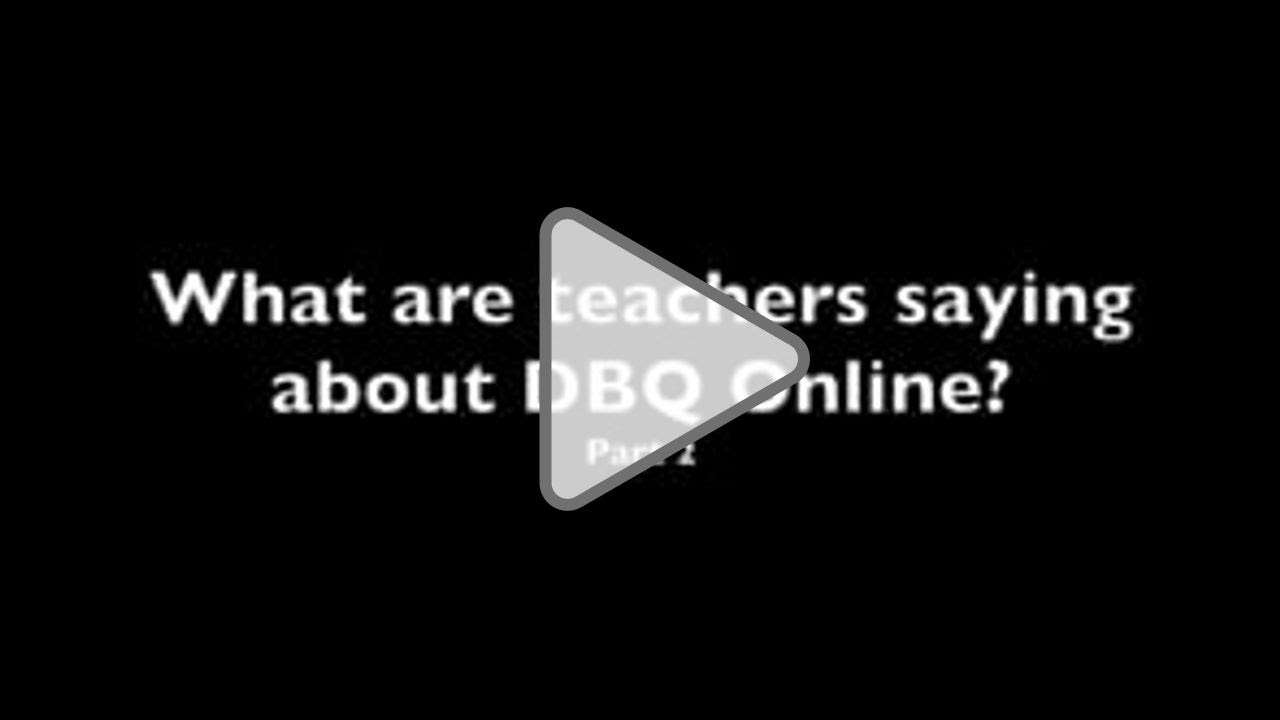 |
| |
Welcome, February!This edition of DBQ Online Support Series includes:
| ||
Take 7 minutes and discover the power of the Teacher Markup tool! Your students will thank you! | ||
 | ||
Check out what Joseph Niedziela (Director of Humanities, Fort Worth ISD, TX), Laura Moreau (K-12 Social Studies Specialist, Lafayette Parish Schools, LA), and Laura Webb (Literacy Specialist for Social Studies, Danville Public Schools, VA) have to say about DBQ Online. Thank you for your kind words, we think it's pretty great, too!  | ||
 | ||
How Did Abolitionists Make the Case Against Slavery?Slavery was part of American life for more than two hundred years. Ridding the country of slavery was a hard-fought battle. This Mini-Q asks you to examine the ways that abolitionists, the people who worked to end slavery, tried to convince others that slavery must be stopped. Binders: Mini-Qs in Literature - Volume 2 & Mini-Qs in Literature - Volume 3 | ||
Martin Luther King and Malcolm X: Which Strategies Made the Most Sense for America in the 1960s?The Civil Rights Movement of the 1950s and 1960s resulted in America’s biggest social revolution since the Civil War. The movement was grassroots and reached across the entire country. Two remarkable men, both quite young, and not always in agreement, became the clearest voices in the movement. These two men were Martin Luther King, Jr. and Malcolm X. In this Mini-Q you will consider the thoughts of both individuals. The documents are short but the ideas are large. Binders: Mini-Qs in Georgia History & Document Based Questions in American History | ||
Harlem Renaissance Poetry: Does High Art or Folk Art Best Express Racial Pride?Between World War I and the Great Depression, Harlem became a hotspot for African- American artists of all kinds—painters, dancers, musicians, playwrights, and poets. During this time, now known as the Harlem Renaissance, a debate sprang up between two camps as to how to best express racial pride. This Mini-Q asks you to read poetry from this period and join the debate. Binder: Mini-Qs in Literature - Volume 1 | ||
Class, Gender, and Race in To Kill a Mockingbird: Is Mayella Powerful?Harper Lee’s classic novel, To Kill a Mockingbird, is both a heartwarming and heartbreaking story. Included in this story is the tale of Mayella Ewell, a poor, white woman living in a racist Southern community in the 1930s. Your task is to read through the documents in this Mini-Q and assess Mayella’s power. Binder: Mini-Qs in Literature - Volume 1 | ||
What Was Harriet Tubman’s Greatest Achievement?Harriet Tubman is a true American hero. In this Mini-Q, you will learn about three of her achievements: helping enslaved people escape to the North, leading a Civil War river raid, and caring for those in need. Then you will decide which of these achievements was the greatest. Binders: Elementary Mini-Qs - Volume 2 & Original US Volume 1 Mini-Qs: Units 1-12 | ||
What Were the Underlying Causes of the Tulsa Race Massacre?On June 1, 1921, a mob of white Tulsans looted and burned the Greenwood District of Tulsa, Oklahoma. Many people died, but the majority—more than 300—were African American. At the time and for decades afterward, the events of that terrible night were referred to as the Tulsa Race Riot. In fact, what happened was not a riot but an organized attack on an established African American community. This Mini-Q explores the underlying causes of the massacre. Binder: New US Volume 2 Mini-Qs: Units 13-27 | ||
Upcoming Workshops:
| ||
| ||
The DBQ Project"Helping ALL students to read smart, think straight and write clearly" Email: info@dbqproject.com |








